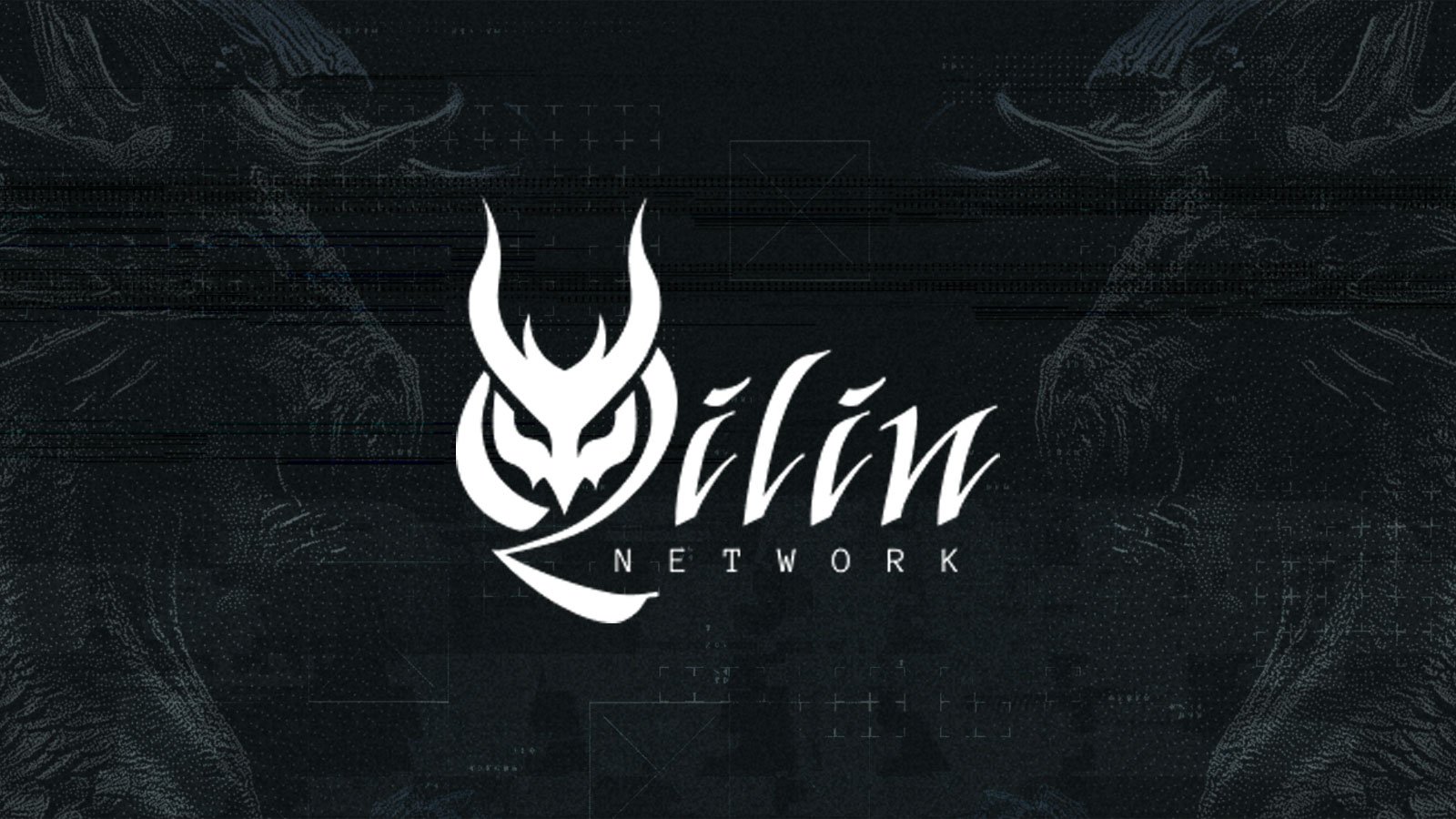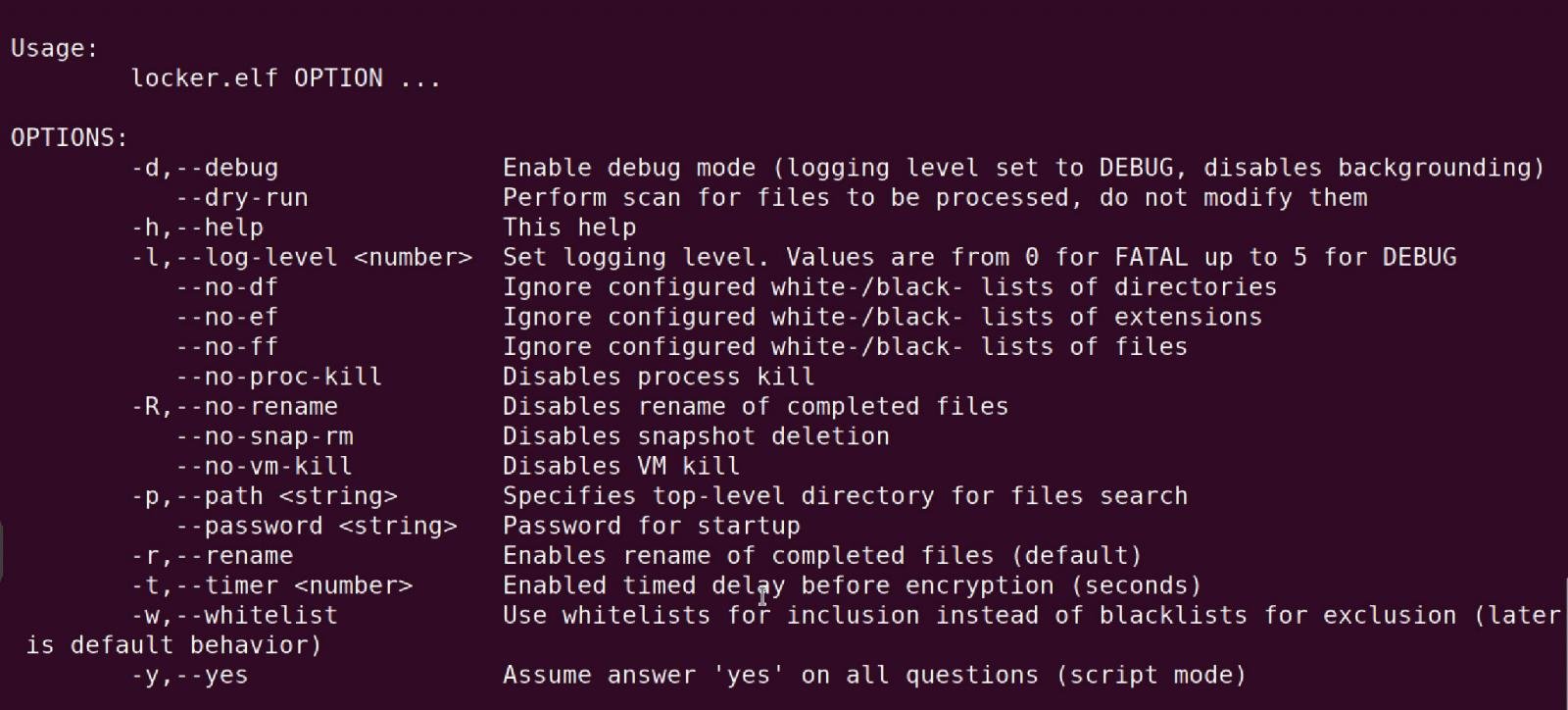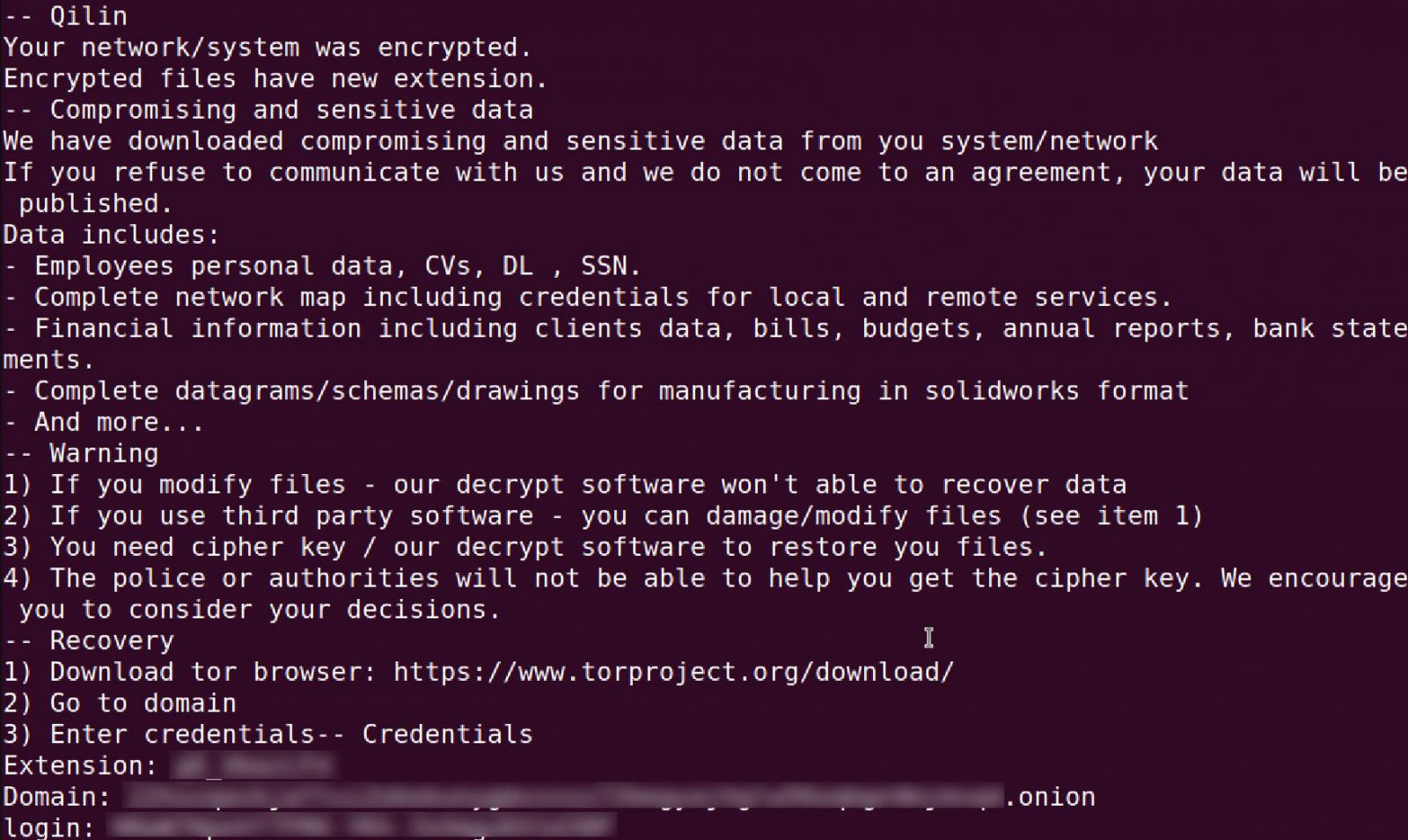Linux version of Qilin ransomware focuses on VMware ESXi

A sample of the Qilin ransomware gang’s VMware ESXi encryptor has been found and it could be one of the most advanced and customizable Linux encryptors seen to date.
The enterprise is increasingly moving to virtual machines to host their servers, as they allow for better usage of available CPU, memory, and storage resources.
Due to this adoption, almost all ransomware gangs have created dedicated VMware ESXi encryptors to target these servers.
While many ransomware operations utilize the leaked Babuk source code to create their encryptors, a few, such as Qilin, create their own encryptors to target Linux servers.
Qilin targets VMware ESXi
Last month, security researcher MalwareHunterTeam found a Linux ELF64 encryptor for the Qilin ransomware gang and shared it with BleepingComputer to analyze.
While the encryptor can be used on Linux, FreeBSD, and VMware ESXi servers, it heavily focuses on encrypting virtual machines and deleting their snapshots.
Qilin’s encryptor is built with an embedded configuration specifying the extension for encrypted files, the processes to terminate, the files to encrypt or exclude, and the folders to encrypt or exclude.
However, it also includes numerous command-line arguments allowing extensive customization of these configuration options and how files are encrypted on a server.
These command line arguments include options to enable a debug mode, perform a dry run without encrypting any files, or customize how virtual machines and their snapshots are encrypted.

Source: BleepingComputer
The full list of command line options are listed below:
OPTIONS:
-d,--debug Enable debug mode (logging level set to DEBUG, disables backgrounding)
--dry-run Perform scan for files to be processed, do not modify them
-h,--help This help
-l,--log-level <number> Set logging level. Values are from 0 for FATAL up to 5 for DEBUG
--no-df Ignore configured white-/black- lists of directories
--no-ef Ignore configured white-/black- lists of extensions
--no-ff Ignore configured white-/black- lists of files
--no-proc-kill Disables process kill
-R,--no-rename Disables rename of completed files
--no-snap-rm Disables snapshot deletion
--no-vm-kill Disables VM kill
-p,--path <string> Specifies top-level directory for files search
--password <string> Password for startup
-r,--rename Enables rename of completed files (default)
-t,--timer <number> Enabled timed delay before encryption (seconds)
-w,--whitelist Use whitelists for inclusion instead of blacklists for exclusion (later is default behavior)
-y,--yes Assume answer 'yes' on all questions (script mode)In the sample analyzed by BleepingComputer.com, the encryptor is configured by default with the following exclusions and targeting criteria:
Processes to not terminate:
"kvm", "qemu", "xen"Directories to exclude from encryption:
"/boot/", "/proc/", "/sys/", "/run/", "/dev/", "/lib/", "/etc/", "/bin/", "/mbr/", "/lib64/", "/vmware/lifecycle/", "/vdtc/", "/healthd/"Files to exclude from encryption:
"initrd", "vmlinuz", "basemisc.tgz", "boot.cfg", "bootpart.gz", "features.gz", "imgdb.tgz", "jumpstrt.gz", "onetime.tgz", "state.tgz", "useropts.gz"File extensions to exclude from encryption:
"v00", "v01", "v02", "v03", "v04", "v05", "v06", "v07", "v08", "v09", "b00", "b01", "b02", "b03", "b04", "b05", "b06", "b07", "b08", "b09", "t00", "t01", "t02", "t03", "t04", "t05", "t06", "t07", "t08", "t09"Directories to target for encryption:
"/home", "/usr/home", "/tmp", "/var/www", "/usr/local/www", "/mnt", "/media", "/srv", "/data", "/backup", "/var/lib/mysql", "/var/mail", "/var/spool/mail", "/var/vm", "/var/lib/vmware", "/opt/virtualbox", "/var/lib/xen", "/var/opt/xen", "/kvm", "/var/lib/docker", "/var/lib/libvirt", "/var/run/sr-mount", "/var/lib/postgresql", "/var/lib/redis", "/var/lib/mongodb", "/var/lib/couchdb", "/var/lib/neo4j", "/var/lib/cassandra", "/var/lib/riak", "/var/lib/influxdb", "/var/lib/elasticsearch"Files to target for encryption:
"3ds", "3g2", "3gp", "7z", "aac", "abw", "ac3", "accdb", "ai", "aif", "aiff", "amr", "apk", "app", "asf", "asx", "atom", "avi", "bak", "bat", "bmp", "bup", "bz2", "cab", "cbr", "cbz", "cda", "cdr", "chm", "class", "cmd", "conf", "cow", "cpp", "cr2", "crdownload", "cs", "csv", "cue", "cur", "dat", "db", "dbf", "dds", "deb", "der", "desktop", "dmg", "dng", "doc", "docm", "dot", "dotm", "dotx", "dpx", "drv", "dtd", "dvi", "dwg", "dxf", "eml", "eps", "epub", "f4v", "fnt", "fon", "gam", "ged", "gif", "gpx", "gz", "h264", "hdr", "hpp", "hqx", "htm", "html", "ibooks", "ico", "ics", "iff", "image", "img", "indd", "iso", "jar", "java", "jfif", "jpe", "jpeg", "jpf", "jpg", "js", "json", "jsp", "key", "kml", "kmz", "log", "m4a", "m4b", "m4p", "m4v", "mcd", "mdbx", "mht", "mid", "mkv", "ml", "mobi", "mov", "mp3", "mp4", "mpa", "mpeg", "mpg", "msg", "nes", "numbers", "odp", "ods", "odt", "ogg", "ogv", "otf", "ova", "ovf", "pages", "parallels", "pcast", "pct", "pdb", "pdf", "pds", "pef", "php", "pkg", "pl", "plist", "png", "pptm", "prproj", "ps", "psd", "ptx", "py", "qcow", "qcow2", "qed", "qt", "r3d", "ra", "rar", "rm", "rmvb", "rtf", "rv", "rw2", "sh", "shtml", "sit", "sitx", "sketch", "spx", "sql", "srt", "svg", "swf", "tar", "tga", "tgz", "thmx", "tif", "tiff", "torrent", "ttf", "txt", "url", "vdi", "vhd", "vhdx", "vmdk", "vmem", "vob", "vswp", "vvfat", "wav", "wbmp", "webm", "webp", "wm", "wma", "wmv", "wpd", "wps", "xhtml", "xlsm", "xml", "xspf", "xvid", "yaml", "yml", "zip", "zipx"Configuring a list of virtual machines that should not be encrypted is also possible.
When executing the encryptor, a threat actor must specify the starting directory for encryption and a specific password tied to the encryptor.
When executed, the ransomware will determine if it is running in Linux, FreeBSD, or VMware ESXi server.
If it detects VMware ESXi, it will run the following esxcli and esxcfg-advcfg commands, which we have not seen in other ESXi encryptors in the past.
for I in $(esxcli storage filesystem list |grep 'VMFS-5' |awk '{print $1}'); do vmkfstools -c 10M -d eagerzeroedthick $I/eztDisk > /dev/null; vmkfstools -U $I/eztDisk > /dev/null; done
for I in $(esxcli storage filesystem list |grep 'VMFS-5' |awk '{print $1}'); do vmkfstools -c 10M -d eagerzeroedthick $I/eztDisk; vmkfstools -U $I/eztDisk; done
for I in $(esxcli storage filesystem list |grep 'VMFS-6' |awk '{print $1}'); do vmkfstools -c 10M -d eagerzeroedthick $I/eztDisk > /dev/null; vmkfstools -U $I/eztDisk > /dev/null; done
for I in $(esxcli storage filesystem list |grep 'VMFS-6' |awk '{print $1}'); do vmkfstools -c 10M -d eagerzeroedthick $I/eztDisk; vmkfstools -U $I/eztDisk; done
esxcfg-advcfg -s 32768 /BufferCache/MaxCapacity
esxcfg-advcfg -s 20000 /BufferCache/FlushIntervalVMware expert Melissa Palmer told BleepingComputer that these commands were likely copied from VMware support bulletins to resolve a known VMware memory heap exhaustion bug and increase performance when executing ESXi commands on the server.
Before encrypting any detected virtual machines, the ransomware will first terminate all VMs and delete their snapshots using the following commands:
esxcli vm process list
vim-cmd vmsvc/getallvms
esxcli vm process kill -t force -w %llu
vim-cmd vmsvc/snapshot.removeall %llu > /dev/null 2>&1All targeted files will then be encrypted and have the configured extension appended to the file name.
In each folder, a ransom note named [extension]_RECOVER.txt will be created that contains links to the ransomware gang’s Tor negotiation site and the login credentials required to access the victim’s chat page.

Source: BleepingComputer
BleepingComputer has seen ransom demands ranging from $25,000 to millions of dollars.
The Qilin ransomware operation
The Qilin ransomware operation was initially launched as “Agenda” in August 2022. However, by September, it had rebranded under the name Qilin, which it continues to operate as to this day.
Like other enterprise-targeting ransomware operations, Qilin will breach a company’s networks and steal data as they spread laterally to other systems.
When done collecting data and gaining server administrator credentials, the threat actors deploy the ransomware to encrypt all devices on the network.
The stolen data and the encrypted files are then used as leverage in double-extortion attacks to coerce a company into paying a ransom demand.
Since its launch, the ransomware operation has had a steady stream of victims but has seen increased activity towards the end of 2023.
A recent attack by Qilin was on the auto-parts giant Yanfeng.
A considerable amount of time and effort goes into maintaining this website, creating backend automation and creating new features and content for you to make actionable intelligence decisions. Everyone that supports the site helps enable new functionality.
If you like the site, please support us on “Patreon” or “Buy Me A Coffee” using the buttons below
To keep up to date follow us on the below channels.

